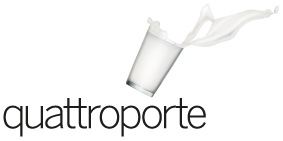
INTRODUCTION
The format of writing known as the essay is a genre of its own, separate from, for example, the scientific treatise or the research paper. The essay presents the author with the exercise of nailing down a theme. Sometimes this leads to detours into logical cul-de-sacs, sometimes it results in giant leaps in an argument. It is rarely unequivocal, unchallengeable or without objections. The essay demands a lot from its reader, both forgiveness and reflection; both being able to zoom out and zoom in.
This is a long essay in four parts with the title ”Capitalism and the wicked problems”. It sounds like the title of a fairy tale, but the text is a reflection based on the observation that the capitalist system, for the first time, is the dominant economic system, globally. What does this responsibility entail, not least for capitalisms perhaps premier institution: ownership?
Part one (”from licence to operate to ability to solve”) is about how the capitalist institutions have always lived in symbiosis with other institutions. Capitalism has been able to focus on creating profits for its owners, and doing this by focusing on a selection of problems that have solvable using industrial methods. Will the system shoulder a greater responsibility now that other systems are faltering?
In part two (”what we can’t measure, we shouldn’t do”) the difference between tame and evil problems are described. The type of problem solving that has been honed during the past hundred odd years is less successful at solving what we can call wicked problems – and these are becoming more numerous. Can the ruling view on how to solve problems be amended?
The third part (”to be legitimate – again”) deals with the legitimacy crisis of capitalism during the 1960s and how the system faces a corresponding situation today. The system successfully redefined itself and it’s role on this occasion – will it succeed with this once again?
The closing part (”third generation business critical”) is about how companies and institutions are expected to take responsibility for many of the evil problems that we encounter in many areas: climate, social injustice, economic disparity and so on. The pressure to change as well as the direction of change is there; what is often lacking is the capacity for change and this requires a reckoning, in particular, with the preconceptions, leadership and structures from earlier generations of capitalism. Will this happen and, if so, what will be the driving force?
CAPITALISM AND THE WICKED PROBLEMS
PART II: WHAT WE CAN’T MEASURE, WE SHOULDN’T DO
Once upon a time nature was animate [1]. It consisted of creatures (spirits, gnomes, trolls), and we still refer to our need to ”listen to”, ”talk to” or in fact ”understand” nature [2]. When inventions like the telescope and the microscope allowed us to see things we had never seen before this nature was de-personalised. And now having a conversation with nature seemed less important – now it was all about measuring and weighing it. This was the origin of what we know as science today.
Something similar happened to one of the most important institutions in capitalism, ownership. As long as companies were personal, i.e. owned by one person, family or kin, the need for measuring and counting was only one road to understanding and action. The double ledgers, that are the algebra of companies, developed in the same place and time where Shakespeare’s Shylock is presented with a demand for a pound of flesh from his own body to settle a debt. The company and its owner were one and the same.
But as companies went public and ownership became spread out they were also de-personalised. And like in the de-personalised nature, the ability to measure, count and compare became tools to exert ownership. In the economic system we call capitalism the unit of measurement was often a forgone conclusion: money.

I det ekonomiska systemet vi kallar kapitalism var också mätenheten oftast given: pengar.
Another example, also from the tumultuous 19th century, is the industrial company. More than anyone Frederick W. Taylor has characterised the image of the industry, brilliantly depicted in Chaplin’s Modern Times. Enormous cogs and assembly lines; small people, always on the move. The system that Taylor advocated as a solution to the efficiency problems in society was dubbed scientific management. This was not an arbitrary name, because as when science originated from a de-personalisation of nature, scientific management originates in the de-personalisation of labour. Taylor explicitly writes that one of his goals is to develop a system that makes the running of a business completely independent on who is in charge of this function.
In Taylor’s system measuring is a vital part. This area was particularly important to the efforts of Taylor’s successors as scientific management was refined and developed. True, repeated attempts were made to re-introduce humans to the system, but measuring as the basis of understanding and decision on actions is still, almost two decades into a new millennium, a powerful norm in our organisations and institutions. The idea that ”what gets measured, gets done” is an oft cited key paragraph for leadership and governing.
So, what is the problem with this? Scientific management, in its modernised versions, has been incredibly successful for more than a hundred years and contributed to moving societies, organisations and people toward greater prosperity, peace, freedom and influence at a historically speaking incredible speed.
The problem is in the problem.
Scientific management was the solution to a well expressed problem. In the foreword of his book [3]. Frederick Taylor describes how ”we can see our forests disappearing, how hydraulic power is wasted, fertile soil is carried out to sea by floods and how we can see the end of our coal and iron resources”. In addition to this threat assessment there is another threat, a less visible one: most of what we humans do is characterised by inefficiency and waste of resources. Taylor leaves the “hows” and the “whys” of disappearing natural resources to others to contemplate, but feels that he himself can address the issue of inefficiency.
Taylor chooses a problem that is comparatively simple to unambiguously describe, a problem that we recognise and where we can make reasonable assumptions on whether it can be solved. We can also formulate what it is we want to achieve and develop ways to ascertain if we have met our goals. We should in no way underestimate how complicated this is, but it is complicated in the same way as a watch movement; it is completely possible to understand if we dismantle it and study each part and how it relates to other parts.

Vi formar organisationsstrukturer och processer för att bidra till att effektivt lösa tama problem, problem som vi känner väl till, som vi har löst tidigare och där det finns en över tiden utvecklad och förfinad erfarenhet att använda sig av.
The German-American city planner Horst Rittel [4] has called such problems ”tame problems”, and Taylor’s system was about solving exactly this kind of problem. This is the same system, albeit modified, that is still with us today, 120 years later. Scientific management is not exclusive to a capitalist system; during the 1930s there were similar ideas in the communist Soviet Union to increase productivity, then with the coal miner Aleksej Stachanov [5] as a prominent figure in what was locally labelled ”Stachanovism”.
Vår förmåga att lösa tama problem har alltså sedan Taylor förfinats. Förutom mätningens centrala roll för problemlösning har en mängd såväl Our ability to solve tame problems has been refined since the time of Taylor. Besides the central role of measurement in problem solving, a number of both technical and social innovations have improved his system. Taylor’s own thoughts on science, specialisation, division and monitoring have been complemented with loans from, in particular, the disciplines of natural science. At engineering and economy programs around the world students are still, to a large extent, trained to master different tools in scientific management [6]. We shape organisational structures and processes to contribute to effectively solving tame problems, problems that we are familiar with, that we have solved before and where we have, over time, established a developed and refined experience – most often in the form of a manual or routine – to utilise.
But Taylor decides on one of the several problems he points out. He chooses to focus on the tame problem. What about the other problems he mentions in the introduction of his book? What kind of problems are these?
When Horst Rittel describes tame problems, he naturally envisions that they have an opposite, he terms these ”wicked” problems. A wicked problem is not just complicated, it is also complex (a little as if the cogs of a watch movement were to change character and function during our dismantling of it), and most of the time we have a limited experience of them. They represent something that we have not seen before (at least not in the same way), and we feel genuinely uncertain of whether or not they can be solved. Maybe there are even multiple solutions that are equally good? Maybe we do not even have access to a language that will allow us to describe what we see and the possible solutions in a comprehensible way? The problems that Taylor decides to not try and solve are such ”wicked” problems; scientific management offers no usable tools in this situation.

När vi känner det sug i magtrakten som mötet med ett elakt problem för med sig, hanterar vi det inte sällan genom att göra om det till ett tamt problem.
So: capitalisms institutions and practices have developed a superior system for solving tame problems. Based on Frederick Taylors work, and complemented during 100 years by an infinite line of scientists and practitioners who have contributed to its development, refinement, and insights.
This system is, however, not as adept at solving wicked problems. [7]
- When we try to solve tame problems we want to reduce uncertainty as quickly as possible and become assured in a decision; faced with wicked problems we need, instead, to absorb that uncertainty and be ready to make decisions without knowing everything.
- Solving tame problems is about weighing alternatives, analysing, and prioritising; solving wicked problems is about maintaining complexity for as long as possible and continuously reformulating your premise.
- In tame problems we want to reach a decision swiftly; wicked problems require the ability to reflect – and then make decisions.
- High pace is an important part of the process of solving tame problems; when faced with wicked problems we prefer to start slowly, work with perseverance and keep our eyes on a long-term achieving of our goals.
- With tame problems we strive for a rapid implementation of the solution and avoiding mistakes; with a wicked problem mistakes are viewed as important feedback, we work with ”prototypes” and experiments using different assumptions during a successive implementation.
- We are fundamentally convinced that we can solve the tame problems, as long as we find the best solution; wicked problems, we realise, might not have an unambiguous solution and not all questions have answers.
- To solve tame problems we like to use hierarchies and proven structures and methods; we approach wicked problems using networks and flexible structures for dialogue and collective exploration.
- When faced with tame problems we worry about reaching a decision too early; when facing wicked problems we risk making the decision too late.
We discover tame problems using known methods of measurement and analysis. The wicked problems often defy measurement by what we have available. We need to invent new tools and languages to formulate the problems. Herein lies the problem with the sentiment ”what gets measured, gets done”. Because who can be bothered to invent something new, when what we have works so well?
When we get that sinking feeling in our belly that facing a wicked problem brings, it is not uncommon that we handle it by turning it into a tame problem. Then we will know how to handle it. This way, inequality in the workplace becomes a question of legislation, carbon dioxide levels in city centres becomes a question of permits and the increasingly hot climate becomes a question of measurements.
Wicked problems are becoming more wicked. In August 2015 Time Magazine wrote the following:
A superwicked problem. That’s the way many scientists have come to characterize climate change […]. A wicked problem is one that is so complex, with so many different causes and stakeholders that it is all but impossible to solve completely. Poverty is a wicked problem; so is terrorism. But those pale in comparison with what´s happening to our planet.
Capitalism has proven to be incredibly skilled at creating prosperity by finding a successful way of solving tame problems. This approach, however, works poorly when faced with the ”superwicked” problems that are now rearing their heads in front of us. The need to measure, weigh and compare everything we do presents obstacles in our path to working with the problem solving processes that we know are required to solve wicked problems.
The idea that ” what gets measured, gets done” might have as a consequence that ”what can not be measured, should not get done”!
Will the capitalist systems institutions, after 120 years of successes, be able to abandon its focus on measurability and have the courage to spend resources on solving problems that will not allow themselves to be weighed, calculated or unambiguously quantified?
Fotnot:
[1] Att naturen är besjälad är en föreställning som går under namnet animism. Och i den mån de andras och varelser som finns i naturen är lika oss kanske man kan tala om antropomorfism, där icke-mänskliga saker antar mänskliga egenskaper. För en lång, lång tid hörde det barnkammaren till, men i det moderna samhället, med robotar och AI verkar antropomorfismen få en renässans; vi döper våra gräsklippningsrobotar, pratar om tvättmaskiner och kaffebryggar med ord som ”han” eller ”hon” och för konversationer med vår Google Home Assistant.
[2] Detta har lysande beskrivits av Bengt Kristensson Uggla i hans senaste bok En strävan efter sanning (Studentlitteratur, 2019).
[3] Taylor, F.W. (1911 [1998]) The Principles of Scientific Management Dover Publications. (min översättning)
[4] Rittel, H.W. & Webber, M M (1975) Dilemmas in a General Theory of Planning, Working papers from The Urban & Regional Development, p 155-169.
[5] Aleksej Grigorjevitj Stachanov (1906-1977) var medlem av Sovjetunionens kommunistiska parti och suppleant i Högsta sovjet. Han var känd som en del av en rörelse för att öka arbetarnas produktivitet och där de främsta företrädarna i rörelsen kallades ”stachanoviter”, som åtnjöt speciella förmåner.
[6] Colby, A. et al (2011) Rethinking Undergrate Business Education, San Fransisco, Jossey-Bass, är starkt kritiska mot denna ”stuprörsmetalitet” inom amerikansk utbildning. Martin, R. (2007) The Opposable Mind, Cambridge, Harvard Business School Press, har liknande kritik förordar något han kallar ”Integrative Thinking”.
[7] Efter: Johansen, B. (2007) Get There Early: Sensing the Future to Compete in the Present, San Fransisco, Berrett-Koehler Publishers

Writes about politics and society.
